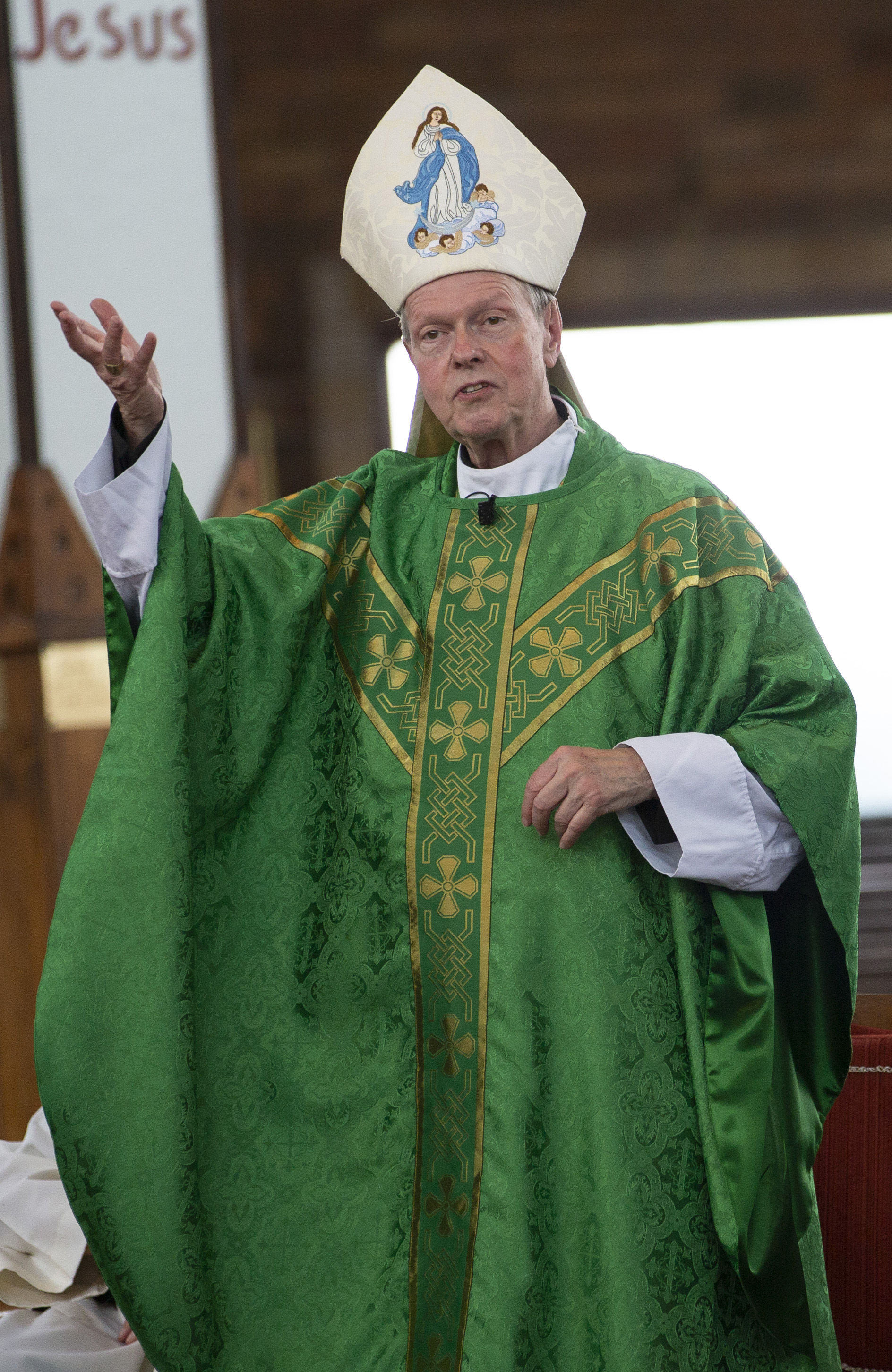April 6, 2018 at 1:53 p.m.
PILGRIM'S PROGRESS
Renewed by St. Davids
On our agenda was an excursion to Pembrokeshire, believed to be the site from which St. Patrick departed when he set sail to Christianize Ireland. Majestic cliffs, pristine beaches, quaint villages and breathtaking views make this county in southwest Wales one of the most spectacular places in the United Kingdom.
While looking for accomodations in Pembrokeshire, I came across the holy city of St. Davids, known as "Britain's smallest city." In accordance with British tradition, it is the presence of a cathedral that designates city status, not its size or population.
A mystical aura seems to cloak this city and all who visit. St. Davids is in a remote corner of Pembrokeshire, across the sea from Ireland. During the Middle Ages, however, this was a place of pilgrimage. Pilgrims flocked to its cathedral, the most important shrine in all of medieval Christendom; the pope decreed "two pilgrimages to St. Davids the equivalent of one to Rome."
Little is known about the Dark Ages when St. David lived, though he is recognized as the most influential clergyman in all of Wales during that time. He is the patron saint of Wales, having Christianized the country in the sixth century.
St. David journeyed across Britain, spreading Christianity among pagan tribes (making him an important link to the country's Celtic past, as well). He founded a monastic order and built a monastery along a river in the wooded Alun Valley, where the cathedral built in his name stands today.
According to legend, St. David was born around 500 A.D. on a clifftop during a storm. The site is marked by the ruins of a chapel, which we happened upon while exploring the grounds of our hotel.
As I read the legend of his birth - waves crashing far below; sharp, damp winds blowing in from the sea - the contemplation of such an event against this backdrop was awe-inspiring. A short walk away lies a holy well, believed to have healing properties, that is said to have sprung up when St. Non gave birth.
St. Davids Cathedral was built in the 12th century. Inside it is St. Davids Shrine. This cathedral is regarded as one of the most glorious in all of Britain. Made of purple stone, it is situated in a grassy hollow below street level.
Descending its stone staircase, I imagined the same steps being taken by pilgrims who had made the journey centuries ago, the great distances from which they had come and the hardships they must have endured during their travels.
Inside the cathedral, there are tombs and effigies lining the aisles of bishops past and other notable figures, including Edmund Tudor, father of King Henry VII and founder of the Welsh-born Tudor dynasty. There are 15th-century choir stalls and a small library with books that belonged to deans, bishops and clergy, dating back to the 16th century. The ceiling is intricately carved of Irish oak and light pours in through high windows.
Standing there, bathed in light, I felt blessed to know this holy place. It is a majestic example of religious medieval architecture, the perfect representation of a time when religion played an extraordinary, unwavering role in everyday life, from birth to death, whether one was a peasant, serf, noble, lord or king.
Sometimes, what makes a trip memorable is unexpected. Recently, my seven-year-old celebrated his first reconciliation. Rev. Paul Borowski, CSsR, our pastor, asked the children what they thought Jesus would do, as a shepherd, if one of the 100 sheep in His flock were to stray: Would He stay and keep watch over the remaining 99, or follow that one lone sheep and try to bring it back?
I couldn't help but smile. I knew that for my son, this story had a special kind of reverence: We had hiked the beautiful Welsh countryside for miles, among endless flocks of sheep.
(Mrs. Kemeklis was a parishioner of St. Clement's Church in Saratoga Springs; she recently moved to New Jersey.)[[In-content Ad]]
SOCIAL MEDIA
OSV NEWS
- Journalists killed in Gaza hospital strike, following global day of prayer for peace
- Colombia’s bishops condemn terrorist attacks that ‘rocked the country’
- Priest’s St. Monica Project helps accompany parents whose children leave the faith
- ICE detentions in immigration courts prompt alarm from Catholic advocates
- Joy, reverence are part of being an altar server, pope says
- Catholic legislators must help build ‘city of God,’ pope says
- Can’t afford a Catholic college? Think again. Many offer full tuition options
- Amid conflict, cholera outbreak accelerates hunger and starvation in Sudan
- Pope defends rights of refugees evicted to build US military base
- Authentic faith is seen in love of God and neighbor, pope says







Comments:
You must login to comment.